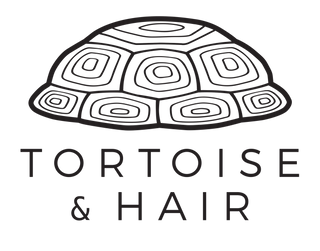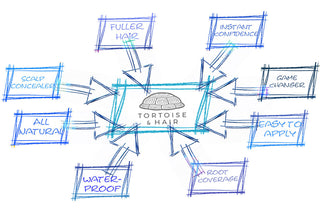Frontal Fibrosing Alopecia (FFA) is a type of scarring alopecia that primarily affects women, especially postmenopausal women. The condition causes a gradual recession of the hairline and often affects the eyebrows and, in some cases, other body hair. FFA is considered an inflammatory disorder, with the inflammation around hair follicles leading to permanent follicle damage and scarring. The exact cause is not fully understood, but hormonal changes, autoimmune responses, and genetic predispositions are thought to contribute.
While the prevalence of FFA is rising, studies estimate it affects around 1% of the population, though the number may be higher due to underdiagnosis. Its impact on appearance, particularly the hairline, can lead to emotional distress and a reduced sense of self-confidence.
What Are the Symptoms?
The most noticeable symptom of Frontal Fibrosing Alopecia is a slowly receding hairline that appears uniform and band-like. This recession typically starts at the temples and moves across the forehead, creating a distinct pattern. Other symptoms may include:
- Thinning or loss of eyebrows: This is often one of the earliest signs of FFA and may occur before hairline recession.
- Redness and inflammation: The scalp along the affected areas may appear inflamed or feel itchy, indicating active follicle damage.
- Smooth, shiny skin: As the condition progresses, scarring leaves the affected scalp areas smooth and devoid of hair follicles.
- Loss of body hair: Some individuals experience a reduction in hair on the arms, legs, or other areas.
Unlike some other forms of alopecia, the scarring caused by FFA leads to permanent hair loss, making early detection and intervention critical to preserving remaining hair.
Can It Be Treated Medically?
While there is no definitive cure for Frontal Fibrosing Alopecia, medical treatments can help slow the progression of hair loss and reduce inflammation. Early intervention is key to managing the condition effectively.
- Topical Corticosteroids: These are often prescribed to reduce inflammation in affected areas. They can help minimize itching and redness, which are signs of active follicle damage.
- Immunosuppressive Medications: Drugs such as hydroxychloroquine or mycophenolate mofetil may be used to manage the autoimmune response and slow the progression of FFA.
- Anti-Androgens: Medications like finasteride or dutasteride may be prescribed to counteract hormonal imbalances thought to contribute to FFA.
- Platelet-Rich Plasma (PRP) Therapy: In some cases, PRP therapy is used to promote scalp health and support remaining hair follicles.
While these treatments can help preserve hair and alleviate symptoms, they are most effective when started early. Regular follow-ups with a dermatologist are essential for monitoring progress and adjusting treatment plans.
What Are Options to Help My Thinning Hair Caused by Frontal Fibrosing Alopecia?
For individuals managing the cosmetic impact of FFA, there are several ways to address thinning hair and boost confidence.
Hair fibers, like those from Tortoise & Hair, offer an easy and effective way to conceal thinning areas near the hairline. These fibers bind to existing hair strands, creating a fuller, thicker appearance that can help mask recession. They are particularly useful for individuals with mild to moderate hairline thinning.
Wigs and hair toppers provide comprehensive coverage for more advanced cases of FFA. Modern wigs are lightweight, breathable, and designed to look natural, offering individuals the freedom to explore various styles and colors. Hair toppers can specifically address thinning at the crown or hairline, blending seamlessly with natural hair.
Styling changes can also play a significant role. Opting for hairstyles that draw attention away from the hairline, such as layered cuts, bangs, or side parts, can create the illusion of fuller hair. Accessories like headbands or scarves can add a fashionable touch while covering affected areas.
For those who choose to embrace their changing appearance, shaving the head or opting for ultra-short styles can transform hair loss into a bold personal statement. Many individuals find empowerment in owning their look and redefining their beauty standards.
Supporting Yourself Through Frontal Fibrosing Alopecia
Living with Frontal Fibrosing Alopecia can be challenging, but you’re not alone. Whether you pursue medical treatments, explore cosmetic solutions like hair fibers or wigs, or embrace your natural changes, the key is finding an approach that makes you feel confident and in control. At Tortoise & Hair, we’re here to support you with products and resources designed to enhance your journey and help you feel like your best self every day.



